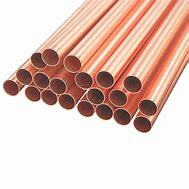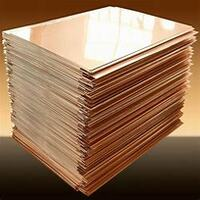1. Introduction
Copper rods are essential in electrical grounding, metal fabrication, plumbing, and recycling—but not all copper rods are created equal. Whether you’re shopping for a copper earth rod, trying to weld with a copper brazing rod, or stripping old wiring for scrap, knowing the right type, size, and application can save time, money, and headaches. In this guide, we’ll break down how to choose, install, and maintain different kinds of copper rod for real-world projects.

2. Understanding Types of Copper Rod
Not every ‘copper rod’ serves the same purpose. Here’s a quick breakdown:
- Solid copper rod: Used for high-conductivity applications like bus bars or earthing where purity matters.
- Copper bonded earthing rod: A steel core coated with a thick layer of copper—ideal for grounding systems where strength and corrosion resistance are needed.
- Copper clad ground rod: Similar to bonded rods but with a thinner copper layer; often used in less demanding environments.
- Copper brazing rod and copper welding rod: Designed specifically for joining copper parts. For copper-to-copper joints, use copper to copper brazing rods or copper to copper welding rod types.
Always match the rod type to your project—using a copper clad steel earth rod in a high-corrosion area could lead to premature failure.
3. Installing a Copper Earth Rod Safely and Effectively
Grounding is critical for safety, and a proper copper earth rod installation ensures your system meets code. Follow these steps:
1. Choose the right rod: A copper bonded ground rod or solid copper rod works best. Check local codes—some require a minimum length (usually 8 feet) and diameter.
2. Drive the rod vertically into moist soil using a hammer or driver tool. Avoid rocky areas that could bend the rod.
3. Connect your grounding conductor (often bare #6 copper wire) to the rod using an approved clamp.

4. Test resistance with a ground resistance tester—it should be under 25 ohms per NEC standards.
Pro tip: If soil is dry or rocky, consider using multiple rods spaced at least 6 feet apart and bonded together.
4. Welding and Brazing with Copper Rods
When joining copper components—like in HVAC or plumbing—you’ll likely use a copper brazing rod or copper welding rod. Here’s how to do it right:
Clean both surfaces thoroughly with a wire brush or sandpaper.
Apply flux to prevent oxidation during heating.
Heat evenly with a torch until the base metal glows dull red.
Touch the copper brazing rod to the joint—it should melt and flow via capillary action.
Let cool naturally; don’t quench with water.

Note: For copper rod welding on thick sections, preheat to reduce cracking. Always use copper to copper welding rod for best results—never substitute with steel or aluminum rods.
5. Stripping Copper Wire: Fast, Safe, and Profitable
If you’re salvaging copper for scrap, efficient wire stripping boosts your returns. Avoid burning copper wire for scrap—it’s illegal in many places and releases toxic fumes.
Best tools and methods:
- Manual wire strippers: Great for small batches of insulated cable.
- Automatic wire stripping machines: Ideal for long runs or thick cables.
- The ‘pull-and-peel’ method: Works well on older NM cable if insulation is brittle.
Always aim for clean, bare copper—scrap yards pay more for stripped vs. insulated wire. And remember: the best way to strip copper cable depends on volume, insulation type, and available tools.
Bonus: Save thin copper strips or flat copper strip pieces—they may be useful for DIY earthing or crafts like copper tape for snails (a gardening hack!).
6. Buying Guide: Copper Rod Price, Copper Strip Price, and Where to Look
Prices vary widely based on material, purity, and form:
- Solid copper rod price: Typically $5–$10 per pound, depending on market rates (check 1oz copper price trends).
- Copper bonded earthing rod: Often $20–$50 each, depending on length and coating thickness.
- Copper strip price: Flat copper strip or 1mm copper strip rolls range from $3–$15 per foot. Specialty alloys like beryllium copper strip cost more.
Where to buy:
- Electrical supply stores for earthing rods and copper strip for earthing.
- Metal suppliers for copper round bar, copper flat bar, or flexible copper bus bar.
- Online marketplaces for roll of copper strip or nickel plated copper strip—search ‘copper strip near me’ for local options.
Watch out for misleading terms: ‘Copper stip’ or ‘copper stripes’ aren’t standard—stick to verified terms like copperstrip or copper metal strips.
7. Common Mistakes to Avoid
- Using copper clad steel ground rod in highly corrosive soils without checking specs.
- Substituting copper pipe for earthing—copper tubing isn’t designed for grounding and may not meet code.
- Overheating during copper rod welding, which can weaken joints.
- Stripping wire with knives or pliers, risking injury and damaging copper.
Always verify material specs—especially when buying copper bonded vs. copper clad products.
8. Conclusion
From earthing your home with a reliable copper earth rod to welding pipes or recycling scrap, copper rods play a vital role across industries. By choosing the right type—whether it’s a copper bonded steel rod, a copper brazing rod, or a simple copper round bar—and following safe installation practices, you’ll ensure performance, compliance, and value. Keep an eye on copper rod price fluctuations, invest in quality tools for stripping and joining, and never cut corners on safety.
Our Website founded on October 17, 2012, is a high-tech enterprise committed to the research and development, production, processing, sales and technical services of ceramic relative materials such as How. Our products includes but not limited to Boron Carbide Ceramic Products, Boron Nitride Ceramic Products, Silicon Carbide Ceramic Products, Silicon Nitride Ceramic Products, Zirconium Dioxide Ceramic Products, etc. If you are interested, please feel free to contact us.

